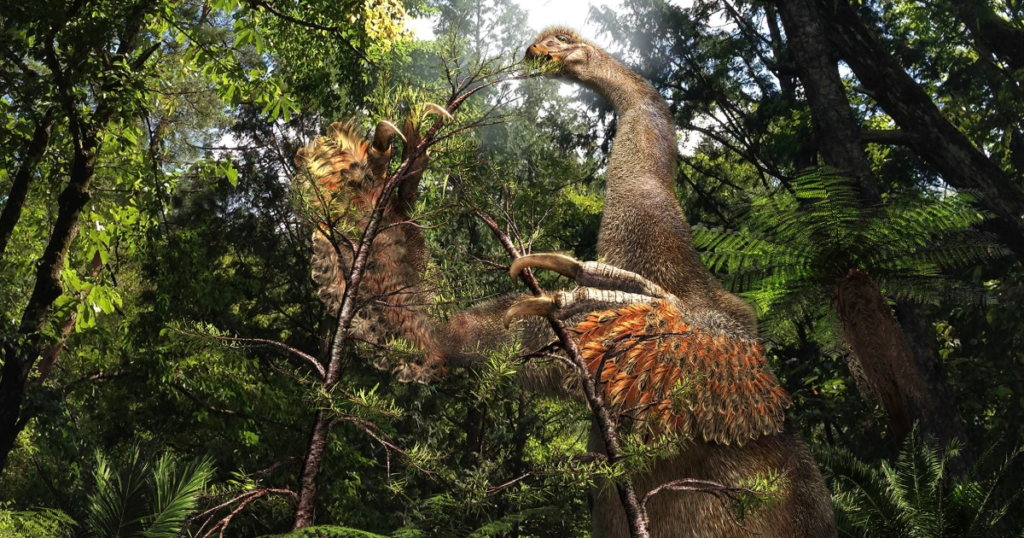According to the BBC, paleontologists have discovered a hitherto unidentified dinosaur species in Mongolia’s Gobi Desert called Duonychus tsogtbaatari.
Among the therizinosaurs, a group of bipedal dinosaurs that usually had three claws on each hand, this recently discovered species is distinct.
Researchers believe that Duonychus tsogtbaatari’s two big, curved claws were highly specialized for grabbing vegetation, in contrast to its three-clawed relatives.
The dinosaur lived between 100.5 and 66 million years ago during the Late Cretaceous period, and its estimated weight was 260 kg.

One of the most important dinosaur fossil reservoirs in the world, according to UNESCO, is the Bayanshiree formation, a rich fossil deposit in the Gobi Desert. Many fossils from the late Cretaceous, when dinosaur evolution reached its final major phase, have been found in the Gobi region.
Therizinosaurs are “awkward-looking” animals, according to Dr. Darla Zelenitsky, a study co-author and associate professor at the University of Calgary. She made reference to the enormous claws of their well-known relative, Therizinosaurus, which appeared in the movie Jurassic World Dominion.
The fact that the Duonychus tsogtbaatari specimen retains the earliest known keratinous sheath of a therizinosaur claw is among the most astounding features of this discovery.

Like the outer layer of human fingernails, this coating would have increased the claw’s strength and usefulness, possibly facilitating movement, defense, or even foraging.
Research on the importance of this two-fingered adaption is still ongoing. It is a rare case in dinosaur evolution because, although two-fingered theropods like Tyrannosaurus Rex are well-known, Duonychus tsogtbaatari independently evolved this characteristic.
Scientists hypothesize that the decreased number of claws might have resulted from environmental influences or specialized eating behaviors.
This finding advances our knowledge of the evolution of dinosaurs during the late Cretaceous and offers fresh perspectives on the diversity of therizinosaurs.












No Comment! Be the first one.